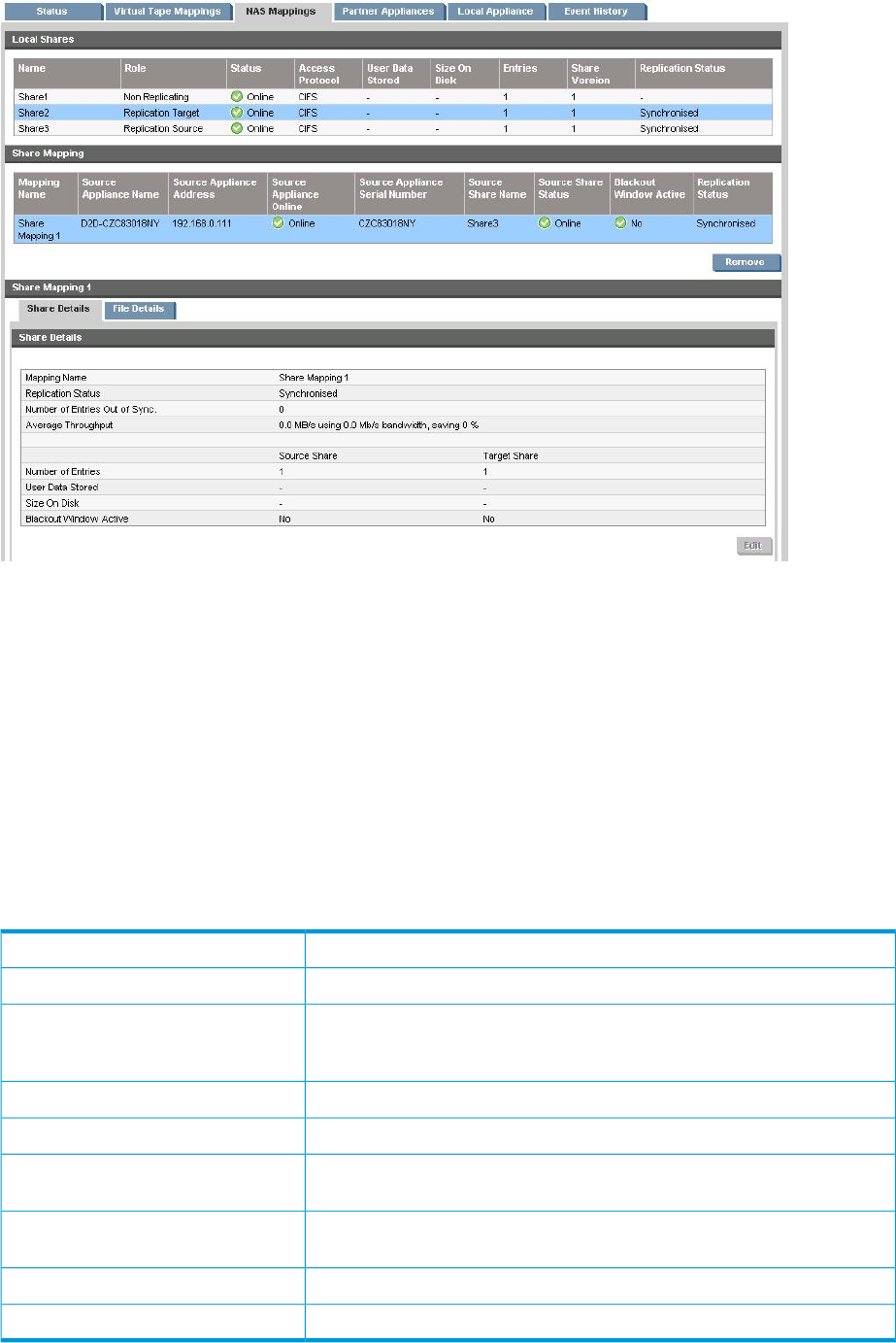Instruction Manual
Table Of Contents
- G2 Backup System user guide
- Contents
- 1 Getting started
- 2 Home, Summary
- 3 Virtual Tape Devices
- 4 NAS
- 5 Appliance Configuration
- 6 Status
- 7 Replication
- 8 Administration
- 9 Restore processes with replication
- 10 Restore processes without replication
- 11 Understanding LEDs
- 12 Hardware monitoring
- 13 Troubleshooting
- Connecting to the StoreOnce Backup System from the backup application
- Connecting to the network
- Using the 10Gb ports (HP D2D4300 Series only)
- Performance
- Web Management Interface errors and warnings
- Power On/Off Problems
- Cannot connect to Web Management Interface
- NFS State handle error
- Cannot authenticate an iSCSI session
- Diagnostic Fibre Channel device
- If the HP StoreOnce Backup System runs out of disk space
- Cannot access a storage shelf (HP D2D4100 and 4300 Series Backup Systems)
- If backup or replication fails
- Recovering Devices that have ‘failed to start’ or have become read-only
- StoreOnce Backup System configuration problems
- Upgrade licenses
- Replacement of hardware
- Upgrades to component parts
- 14 Hard disk replacement
- A Extra information for G1 products
- Glossary
- About this guide
- Index

Local shares
This section contains a list of all available NAS shares that have been configured on this HP
StoreOnce Backup System.
• Non-replicating: a share on this HP StoreOnce Backup System that has not yet been mapped
for replication. Replication and Recovering Wizards are available only with non-replicating
shares.
• Replication-Source: a share on this HP StoreOnce Backup System that has been mapped for
replication.
• Replication-Target: a share on this HP StoreOnce Backup System that has been replicated
from a Replication-Source share.
Table 18 Local share parameters
The name of the share, defined when the share was created.Share Name
The status of the local share, such as online.Share Status
The role, which may be non-replicating, replication-source or replication-target.
All shares are initially non-replicating, until mappings have been configured
using this page.
Role
The amount in GB of user data stored.User Data Stored
The amount of space used on the disk.Size on disk
The number of files and directories existing on the local share (every existing
file and directory will be replicated if the share is mapped).
Entries
The access protocol that was configured when the NAS share was created:
CIFS or NFS.
Access protocol
The version number of the share.Share Version
Replication status, which may be Synchronisd, SynchronisingReplication status
NAS Mappings (Replication) 67










